Evaluating the Intertwined Relationships of the Drivers for University Technology Transfer
Abstract
:1. Introduction
2. Conceptual Background
2.1. Organizational Culture Aspect
- (1)
- Top Manager’s Attitude and Capacity
- (2)
- School Characteristics and Image
- (3)
- Entrepreneurship Encouragement
2.2. Organizational Structure and System Aspect
- (1)
- Degree of Academic Freedom
- (2)
- Internal Incentive System
- (3)
- Connection with Industry
2.3. Technology Inventor Aspect
- (1)
- Attitude of Inventor
- (2)
- Knowledge of Inventor
- (3)
- Inventor Experience
2.4. Essence of Technology Aspect
- (1)
- Industrial Applicability
- (2)
- Novelty
- (3)
- Inventiveness
3. Research Method
3.1. DEMATEL Analysis Steps
- (1)
- Define the quality factor characteristics and establish an evaluation scale
- (2)
- Obtain interdependent data for all factors using the expert opinion method
- (3)
- Calculate the arithmetic mean matrix
- (4)
- Calculate direct/indirect matrix
- (5)
- Utilize the direct/indirect matrix
- (6)
- Causal Diagram
3.2. Data Collection
3.3. Structure of the Study
4. Empirical Research and Discussion
4.1. Research Data Validation and Robustness
4.2. Analysis of Direct and Indirect Impact of Main Aspects on University Technology Transfer
4.3. Analysis of Direct and Indirect Impact of Sub-Aspects of Organizational Culture on University Technology Transfer
4.4. Analysis of Direct and Indirect Impact Organizational Structure and System Sub-Aspects in University Technology Transfer
4.5. Analysis of Direct and Indirect Impact of Sub-Aspects of Technology Inventor on University Technology Transfer
4.6. Analysis of Direct and Indirect Impact of Essence of Technology Sub-Aspects on University Technology Transfer
5. Conclusions and Remarks
Funding
Institutional Review Board Statement
Informed Consent Statement
Data Availability Statement
Conflicts of Interest
References
- Hansen, K.; Kim, J.J.; Suffian, S.; Mehta, K. Leveraging informal lending mechanisms to facilitate technology transfer and microenterprise in developing countries. Technol. Soc. 2015, 41, 65–75. [Google Scholar] [CrossRef]
- Winkelbach, A.; Walter, A. Complex technological knowledge and value creation in science-to-industry technology transfer projects: The moderating effect of absorptive capacity. Ind. Mark. Manag. 2015, 47, 98–108. [Google Scholar] [CrossRef]
- Soliman, A.F. The effect of leadership empowerment on technology transfer effectiveness: A proposed model: An applied study on the telecommunication companies in one of the developing countries. J. High Technol. Manag. Res. 2020, 31, 100371. [Google Scholar] [CrossRef]
- Kalar, B.; Antoncic, B. The entrepreneurial university, academic activities and technology and knowledge transfer in four European countries. Technovation 2015, 36–37, 1–11. [Google Scholar] [CrossRef]
- Simons, A. How does technology transfer affect backward linkages? A motivating example theoretical analysis. Econ. Model. 2014, 42, 94–105. [Google Scholar] [CrossRef]
- Newman, C.; Rand, J.; Talbot, T.; Tarp, F. Technology transfers, foreign investment and productivity spillovers. Eur. Econ. Rev. 2015, 76, 168–187. [Google Scholar] [CrossRef] [Green Version]
- Bozeman, B.; Rimes, H.; Youtie, J. The evolving state-of-the-art in technology transfer research: Revisiting the contingent effectiveness model. Res. Policy 2015, 44, 34–49. [Google Scholar] [CrossRef]
- Soares, T.J.; Torkomian, A.L.V.; SeidoNagano, M. University regulations, regional development and technology transfer: The case of Brazil. Technol. Forecast. Soc. Chang. 2020, 158, 120129. [Google Scholar] [CrossRef]
- O’Kane, C.; Mangematin, V.; Geoghegan, W.; Fitzgerald, C. University technology transfer offices: The search for identity to build legitimacy. Res. Policy 2015, 44, 421–437. [Google Scholar] [CrossRef] [Green Version]
- Blohmke, J. Technology complexity, technology transfer mechanisms and sustainable development. Energy Sustain. Dev. 2014, 23, 237–246. [Google Scholar] [CrossRef]
- Chen, Z.; Ming, X.; Zhou, T.; Chang, Y. Sustainable supplier selection for smart supply chain considering internal and external uncertainty: An integrated rough-fuzzy approach. Appl. Soft Comput. 2020, 87, 106004. [Google Scholar] [CrossRef]
- Pan, X.; Wang, Y. Evaluation of renewable energy sources in China using an interval type-2 fuzzy large-scale group risk evaluation method. Appl. Soft Comput. 2021, 108, 107458. [Google Scholar] [CrossRef]
- Shafqat, W.; Byun, Y.C.; Park, N. Effectiveness of Machine Learning Approaches Towards Credibility Assessment of Crowdfunding Projects for Reliable Recommendations. Appl. Sci. 2020, 10, 9062. [Google Scholar] [CrossRef]
- Shafqat, W.; Byun, Y.C. Topic predictions and optimized recommendation mechanism based on integrated topic modeling and deep neural networks in crowdfunding platforms. Appl. Sci. 2019, 9, 5496. [Google Scholar] [CrossRef] [Green Version]
- Chen, W.K.; Nalluri, V.; Hung, H.C.; Chang, M.C.; Lin, C.T. Apply DEMATEL to Analyzing Key Barriers to Implementing the Circular Economy: An Application for the Textile Sector. Appl. Sci. 2021, 11, 3335. [Google Scholar] [CrossRef]
- Osabutey, E.L.C.; Croucher, R. Intermediate institutions and technology transfer in developing countries: The case of the construction industry in Ghana. Technol. Forecast. Soc. Chang. 2018, 128, 154–163. [Google Scholar] [CrossRef] [Green Version]
- Osabutey, E.L.C.; Jackson, T. The impact on development of technology and knowledge transfer in Chinese MNEs in sub-Saharan Africa: The Ghanaian case. Technol. Forecast. Soc. Chang. 2019, 148, 119725. [Google Scholar] [CrossRef]
- Osabutey, E.L.C.; Jin, Z. Factors influencing technology and knowledge transfer: Configurational recipes for Sub-Saharan Africa. J. Bus. Res. 2016, 69, 5390–5395. [Google Scholar] [CrossRef] [Green Version]
- Scuotto, V.; Beatrice, O.; Valentina, C.; Nicotra, M.; Gioia, L.D.; Briamonte, M.F. Uncovering the micro-foundations of knowledge sharing in open innovation partnerships: An intention-based perspective of technology transfer. Technol. Forecast. Soc. Chang. 2020, 152, 119906. [Google Scholar] [CrossRef]
- Good, M.; Knockaert, M.; Soppe, B.; Wright, M. The technology transfer ecosystem in academia. An organizational design perspective. Technovation 2019, 82–83, 35–50. [Google Scholar] [CrossRef]
- Chege, S.M.; Wang, D.; Suntu, S.L.; Bishoge, O.K. Influence of technology transfer on performance and sustainability of standard gauge railway in developing countries. Technol. Soc. 2019, 56, 79–92. [Google Scholar] [CrossRef]
- Santacreu-Vasut, E.; Teshima, K. Foreign employees as channel for technology transfer: Evidence from MNC’s subsidiaries in Mexico. J. Dev. Econ. 2016, 122, 92–112. [Google Scholar] [CrossRef]
- Oh, C.; Matsuoka, S. Complementary approaches to discursive contestation on the effects of the IPR regime on technology transfer in the face of climate change. J. Clean. Prod. 2016, 128, 168–177. [Google Scholar] [CrossRef]
- Lee, J.C.; Shiue, Y.C.; Chen, C.Y. Examining the impacts of organizational culture and top management support of knowledge sharing on the success of software process improvement. Comput. Hum. Behav. 2016, 54, 462–474. [Google Scholar] [CrossRef]
- Lee, M.S.; Evans, B.T.; Stern, A.D.; Hornstein, M.D. Economic implications of the Society for Assisted Reproductive Technology embryo transfer guidelines: Healthcare dollars saved by reducing iatrogenic triplets. Fertil. Steril. 2016, 106, 189–195. [Google Scholar] [CrossRef] [Green Version]
- Majid, M.A.; Baharuddin, A.; Chang, L.W. Preventing intangible technology transfer (ITT) on the Internet and telecommunications for bioterrorism through Malaysia’s Strategic Trade Act 2010 (STA 2010). Comput. Law Secur. Rev. 2016, 32, 495–512. [Google Scholar] [CrossRef]
- Moortel, K.D.; Crispeels, T. International university-university technology transfer: Strategic management framework. Technol. Forecast. Soc. Chang. 2018, 135, 145–155. [Google Scholar] [CrossRef]
- Son, H.; Chung, Y.; Hwang, H. Do technology entrepreneurship and external relationships always promote technology transfer? Evidence from Korean public research organizations. Technovation 2019, 82–83, 1–15. [Google Scholar] [CrossRef]
- Sobotka, A.; Linczowski, K.; Radziejowska, A. Substitution of Material Solutions in the Operating Phase of a Building. Appl. Sci. 2021, 11, 2812. [Google Scholar] [CrossRef]
- Jun, Y.; Ji, I. Demand-pull Technology Transfer and Needs-articulation of Users: A Preliminary Study. Procedia Comput. Sci. 2016, 91, 287–295. [Google Scholar] [CrossRef] [Green Version]
- Iwasaki, I.; Tokunaga, M. Technology transfer and spillovers from FDI in transition economies: A meta-analysis. J. Comp. Econ. 2016, 44, 1086–1114. [Google Scholar] [CrossRef]
- Ungureanu, M.; Pop, N.; Ungureanu, N. Innovation and Technology Transfer for Business Development. Procedia Eng. 2016, 149, 95–500. [Google Scholar] [CrossRef] [Green Version]
- Botchie, D.; Sarpong, D.; Bi, J. A comparative study of appropriateness and mechanisms of hard and soft technologies transfer. Technol. Forecast. Soc. Chang. 2018, 131, 214–226. [Google Scholar] [CrossRef] [Green Version]
- Abbas, A.; Avdic, A.; Xiaobao, P.; Hasan, M.M.; Ming, W. University-government collaboration for the generation and commercialization of new knowledge for use in industry. J. Innov. Knowl. 2019, 4, 23–31. [Google Scholar] [CrossRef]
- Urban, F.; Zhou, Y.; Nordensvard, J.; Narain, A. Firm-level technology transfer and technology cooperation for wind energy between Europe, China and India: From North–South to South–North cooperation. Energy Sustain. Dev. 2015, 28, 29–40. [Google Scholar] [CrossRef]
- Prudhomme, D.; Zedtwitz, M. Managing “forced” technology transfer in emerging markets: The case of China. J. Int. Manag. 2019, 25, 100670. [Google Scholar] [CrossRef]
- Franco, M.; Pinho, C. A case study about cooperation between University Research Centres: Knowledge transfer perspective. J. Innov. Knowl. 2019, 4, 62–69. [Google Scholar] [CrossRef]
- Kumar, S.; Luthra, S.; Haleem, A.; Mangla, S.K.; Garg, D. Identification and evaluation of critical factors to technology transfer using AHP approach. Int. Strateg. Manag. Rev. 2015, 3, 24–42. [Google Scholar] [CrossRef] [Green Version]
- Belitski, M.; Aginskaja, A.; Marozau, R. Commercializing university research in transition economies: Technology transfer offices or direct industrial funding. Res. Policy 2019, 48, 601–615. [Google Scholar] [CrossRef]
- Matinaro, V.; Liu, Y. Towards increased innovativeness and sustainability through organizational culture: A case study of a Finnish construction business. J. Clean. Prod. 2017, 142, 3184–3193. [Google Scholar] [CrossRef]
- Erhardt, N.; Martin-Rios, C.; Heckscher, C. Am i doing the right thing? Unpacking workplace rituals as mechanisms for strong organizational culture. Int. J. Hosp. Manag. 2016, 59, 31–41. [Google Scholar] [CrossRef] [Green Version]
- Rey-Martí, A.; Ribeiro-Soriano, D.; Sánchez-García, J.L. Giving back to society: Job creation through social entrepreneurship. J. Bus. Res. 2016, 69, 2067–2072. [Google Scholar] [CrossRef]
- An, Y.; Kang, J. Relationship between Organizational Culture and Workplace Bullying among Korean Nurses. Asian Nurs. Res. 2016, 10, 234–239. [Google Scholar] [CrossRef] [PubMed] [Green Version]
- Lee, M.T.; Raschke, R.L.; Louis, R.S. Exploiting organizational culture: Configurations for value through knowledge worker’s motivation. J. Bus. Res. 2016, 69, 5442–5447. [Google Scholar] [CrossRef]
- Yu, Y.; Choi, Y. Stakeholder pressure and CSR adoption: The mediating role of organizational culture for Chinese companies. Soc. Sci. J. 2016, 53, 226–235. [Google Scholar] [CrossRef]
- Lu, V.N.; Plewa, C.; Ho, J. Managing governmental business relationships: The impact of organisational culture difference and compatibility. Australas. Mark. J. 2016, 24, 93–100. [Google Scholar] [CrossRef]
- Philipson, S. Sources of innovation: Consequences for knowledge production and transfer. J. Innov. Knowl. 2020, 5, 50–58. [Google Scholar] [CrossRef]
- Chumg, H.F.; Seaton, J.; Cooke, L.; Ding, W.Y. Factors affecting employees’ knowledge-sharing behaviour in the virtual organisation from the perspectives of well-being and organisational behaviour. Comput. Hum. Behav. 2016, 64, 432–448. [Google Scholar] [CrossRef] [Green Version]
- Chatman, J.A.; O’Reilly, C.A. Paradigm lost: Reinvigorating the study of organizational culture. Res. Organ. Behav. 2016, 36, 199–224. [Google Scholar] [CrossRef] [Green Version]
- Yeo, D.; Kim, M.S.; Bae, J.H. Adversarial Optimization-Based Knowledge Transfer of Layer-Wise Dense Flow for Image Classification. Appl. Sci. 2021, 11, 3720. [Google Scholar] [CrossRef]
- Chen, K.H.; Yien, J.M.; Chiang, C.H.; Tsai, P.C.; Tsai, F.S. Identifying Key Sources of City Air Quality: A Hybrid MCDM Model and Improvement Strategies. Appl. Sci. 2019, 9, 1414. [Google Scholar] [CrossRef] [Green Version]
- Valmohammadi, C.; Roshanzamir, S. The guidelines of improvement: Relations among organizational culture, TQM and performance. Int. J. Prod. Econ. 2015, 164, 167–178. [Google Scholar] [CrossRef]
- García-Vega, M.; Vicente-Chirivella, Ó. Do university technology transfers increase firms’ innovation. Eur. Econ. Rev. 2020, 123, 103388. [Google Scholar] [CrossRef]
- Belasen, A.R.; Kutan, A.M.; Belasen, A.T. The impact of unsuccessful pirate attacks on financial markets: Evidence in support of Leeson’s reputation-building theory. Econ. Model. 2017, 60, 344–351. [Google Scholar] [CrossRef]
- Bortolotti, T.; Boscari, S.; Danese, P. Successful lean implementation: Organizational culture and soft lean practices. Int. J. Prod. Econ. 2015, 160, 182–201. [Google Scholar] [CrossRef] [Green Version]
- Hemsley-Brown, J.; Melewar, T.C.; Nguyen, B.; Wilson, E.J. Exploring brand identity, meaning, image, and reputation (BIMIR) in higher education: A special section. J. Bus. Res. 2016, 69, 3019–3022. [Google Scholar] [CrossRef]
- Zhou, T.; Ding, S.; Fan, W.; Wang, H. An improved public goods game model with reputation effect on the spatial lattices. Chaos Solitons Fractals 2016, 93, 130–135. [Google Scholar] [CrossRef]
- Woods, C.L. When more than reputation is at risk: How two hospitals responded to Ebola. Public Relat. Rev. 2016, 42, 893–902. [Google Scholar] [CrossRef]
- Foroudi, P.; Jin, Z.; Gupta, S.; Melewar, T.C.; Foroudi, M.M. Influence of innovation capability and customer experience on reputation and loyalty. J. Bus. Res. 2016, 69, 4882–4889. [Google Scholar] [CrossRef] [Green Version]
- Agostini, L.; Nosella, A. The central role of a company’s technological reputation in enhancing customer performance in the B2B context of SMEs. J. Eng. Technol. 2016, 42, 1–14. [Google Scholar] [CrossRef]
- Krishnan, C.N.V.; Partnoy, F.; Thomas, R.S. The second wave of hedge fund activism: The importance of reputation, clout, and expertise. J. Corp. Financ. 2016, 40, 296–314. [Google Scholar] [CrossRef]
- Malen, J.; Marcus, A.A. Promoting clean energy technology entrepreneurship: The role of external context. Energy Policy 2017, 102, 7–15. [Google Scholar] [CrossRef]
- Walter, S.G.; Block, J.H. Outcomes of entrepreneurship education: An institutional perspective. J. Bus. Ventur. 2016, 31, 216–233. [Google Scholar] [CrossRef] [Green Version]
- Ji, Y.; Qi, L.; Liu, Y.; Liu, X.; Li, H.X.; Li, Y. Assessing and Prioritising Delay Factors of Prefabricated Concrete Building Projects in China. Appl. Sci. 2018, 8, 2324. [Google Scholar] [CrossRef] [Green Version]
- Huh, S.M.; Kim, W.-J. The Derivation of Defect Priorities and Core Defects through Impact Relationship Analysis between Embedded Software Defects. Appl. Sci. 2020, 10, 6946. [Google Scholar] [CrossRef]
- Ruskovaara, E.; Hämäläinen, M.; Pihkala, T. HEAD teachers managing entrepreneurship education-Empirical evidence from general education. Teach. Teach. Educ. 2016, 55, 155–164. [Google Scholar] [CrossRef]
- Honjo, Y. Why are entrepreneurship levels so low in Japan. Jpn. World Econ. 2015, 36, 88–101. [Google Scholar] [CrossRef]
- Jolly, S.; Raven, R.P.J.M. Collective institutional entrepreneurship and contestations in wind energy in India. Renew. Sustain. Energy Rev. 2015, 42, 999–1011. [Google Scholar] [CrossRef] [Green Version]
- Zampetakis, L.A.; Lerakis, M.; Kafetsios, K.; Moustakis, V. Investigating the emotional impact of entrepreneurship programs. J. Bus. Ventur. Insights 2015, 4, 38–41. [Google Scholar] [CrossRef]
- Yuh, J.Y.; Cheng, C.M. Construction of a manipulator with six degrees of freedom and a rotary platform differentially pumped via retractable welded bellows. Vacuum 2015, 121, 283–288. [Google Scholar] [CrossRef]
- Xing, C.; Zhou, C. A singular planar element with rotational degree of freedom for fracture analysis. Theor. Appl. Fract. Mech. 2016, 86, 239–249. [Google Scholar] [CrossRef]
- Angulo-Guerrero, M.J.; Pérez-Moreno, S.; Abad-Guerrero, I.M. How economic freedom affects opportunity and necessity entrepreneurship in the OECD countries. J. Bus. Res. 2017, 73, 30–37. [Google Scholar] [CrossRef]
- Zhang, J.T. An approximate degrees of freedom test for heteroscedastic two-way ANOVA. J. Stat. Plan. Inference 2012, 142, 336–346. [Google Scholar] [CrossRef]
- Kopytova, A. Development of the Implementation Procedure for a Rational Incentive System. Procedia Eng. 2016, 165, 1132–1140. [Google Scholar] [CrossRef]
- Fang, D.; Holmén, M.; Kleinlercher, D.; Kirchler, M. How tournament incentives affect asset markets: A comparison between winner-take-all tournaments and elimination contests. J. Econ. Dyn. Control 2017, 75, 1–27. [Google Scholar] [CrossRef]
- Ibanez-Lopez, A.S.; Martinez-Val, J.M.; Moratilla-Soria, B.Y. A dynamic simulation model for assessing the overall impact of incentive policies on power system reliability, costs and environment. Energy Policy 2017, 102, 170–188. [Google Scholar] [CrossRef]
- Xiao, J.; Ding, T.; Zhang, Q. Structural behavior of a new moment-resisting DfD concrete connection. Eng. Struct. 2017, 132, 1–13. [Google Scholar] [CrossRef]
- Liu, Q.; Luo, J.; Tian, G.G. Managerial professional connections versus political connections: Evidence from firms’ access to informal financing resources. J. Corp. Financ. 2016, 41, 179–200. [Google Scholar] [CrossRef]
- Bao, X.; Johan, S.; Kutsuna, K. Do political connections matter in accessing capital markets? Evidence from China. Emerg. Mark. Rev. 2016, 29, 24–41. [Google Scholar] [CrossRef]
- Boyack, K.W.; Klavans, R. Measuring science-technology interaction using rare inventor-author names. J. Informetr. 2008, 2, 173–182. [Google Scholar] [CrossRef]
- Xue, X.; Ma, X.; Jiang, M.; Gao, Y.; Park, S.W. The Construction of an Intelligent Risk-Prevention System for Marine Silk Road. Appl. Sci. 2020, 10, 5044. [Google Scholar] [CrossRef]
- Lubango, L.M. The effect of co-inventors’ reputation and network ties on the diffusion of scientific and technical knowledge from academia to industry in South Africa. World Pat. Inf. 2015, 43, 5–11. [Google Scholar] [CrossRef]
- Breschi, S.; Catalini, C. Tracing the links between science and technology: An exploratory analysis of scientists’ and inventors’ networks. Res. Policy 2010, 39, 14–26. [Google Scholar] [CrossRef]
- Tsai, J.F.; Wang, C.P.; Lin, M.H.; Huang, S.-W. Analysis of Key Factors for Supplier Selection in Taiwan’s Thin-Film Transistor Liquid-Crystal Displays Industry. Mathematics 2021, 9, 396. [Google Scholar] [CrossRef]
- Kang, B.; Motohashi, K. Essential intellectual property rights and inventors’ involvement in standardization. Res. Policy 2015, 44, 483–492. [Google Scholar] [CrossRef]
- Xiang, X.Y.; Cai, H.; Lam, S.; Pei, Y.L. International knowledge spillover through co-inventors: An empirical study using Chinese assignees’ patent data. Technol. Forecast. Soc. Chang. 2013, 80, 161–174. [Google Scholar] [CrossRef]
- Crescenzi, R.; Nathan, M.; Rodríguez-Pose, A. Do inventors talk to strangers? On proximity and collaborative knowledge creation. Res. Policy 2016, 45, 177–194. [Google Scholar] [CrossRef]
- Melero, E.; Palomeras, N. The Renaissance Man is not dead! The role of generalists in teams of inventors. Res. Policy 2015, 44, 154–167. [Google Scholar] [CrossRef]
- Drivas, K.; Economidou, C.; Karkalakos, S.; Tsionas, E.G. Mobility of knowledge and local innovation activity. Eur. Econ. Rev. 2016, 85, 39–61. [Google Scholar] [CrossRef] [Green Version]
- Dornbusch, F.; Neuhäusler, P. Composition of inventor teams and technological progress- The role of collaboration between academia and industry. Res. Policy 2015, 44, 1360–1375. [Google Scholar] [CrossRef]
- Chen, W.-K.; Lin, C.-T. Interrelationship among CE Adoption Obstacles of Supply Chain in the Textile Sector: Based on the DEMATEL-ISM Approach. Mathematics 2021, 9, 1425. [Google Scholar] [CrossRef]
- Schettino, F.; Sterlacchini, A.; Venturini, F. Inventive productivity and patent quality: Evidence from Italian inventors. J. Policy Model. 2013, 35, 1043–1056. [Google Scholar] [CrossRef] [Green Version]
- Koc, T.; Bozdag, E. Measuring the degree of novelty of innovation based on Porter’s value chain approach. Eur. J. Oper. Res. 2017, 257, 559–567. [Google Scholar] [CrossRef]
- Strumsky, D.; Lobo, J. Identifying the sources of technological novelty in the process of invention. Res. Policy 2015, 44, 1445–1461. [Google Scholar] [CrossRef] [Green Version]
- Padula, G.; Novelli, E.; Conti, R. SMEs inventive performance and profitability in the markets for technology. Technovation 2015, 41–42, 38–50. [Google Scholar] [CrossRef] [Green Version]
- Baykasoğlu, A.; Gölcük, İ. Development of an interval type-2 fuzzy sets based hierarchical MADM model by combining DEMATEL and TOPSIS. Expert Syst. Appl. 2017, 70, 37–51. [Google Scholar] [CrossRef]
- Chinkatham, T.; Cavallucci, D. Early feasibility evaluation of Solution Concepts in an Inventive Design Method Framework: Approach and support tool. Comput. Ind. 2015, 67, 1–16. [Google Scholar] [CrossRef]
- Mansoor, M.; Mariun, N.; AbdulWahab, N.I. Innovating problem solving for sustainable green roofs: Potential usage of TRIZ -Theory of inventive problem solving. Ecol. Eng. 2017, 99, 209–221. [Google Scholar] [CrossRef]
- Li, H.; Wang, W.; Fan, L.; Li, Q.; Chen, X. A novel hybrid MCDM model for machine tool selection using fuzzy DEMATEL, entropy weighting and later defuzzification VIKOR. Appl. Soft Comput. 2020, 91, 106207. [Google Scholar] [CrossRef]
- Zhang, M.C.; Zhu, B.W.; Huang, C.M.; Tzeng, G.H. Systematic Evaluation Model for Developing Sustainable World-Class Universities: An East Asian Perspective. Mathematics 2021, 9, 837. [Google Scholar] [CrossRef]
- Jiang, S.; Shi, H.; Lin, W.; Liu, H.C. A large group linguistic Z-DEMATEL approach for identifying key performance indicators in hospital performance management. Appl. Soft Comput. 2020, 86, 105900. [Google Scholar] [CrossRef]
- Büyüközkan, G.; Güleryüz, S. An integrated DEMATEL-ANP approach for renewable energy resources selection in Turkey. Int. J. Prod. Econ. 2016, 182, 435–448. [Google Scholar] [CrossRef]
- Uygun, Ö.; Kaçamak, H.; Kahraman, Ü.A. An integrated DEMATEL and Fuzzy ANP techniques for evaluation and selection of outsourcing provider for a telecommunication company. Comput. Ind. Eng. 2015, 86, 137–146. [Google Scholar] [CrossRef]
- Gölcük, İ.; Baykasoğlu, A. An analysis of DEMATEL approaches for criteria interaction handling within ANP. Expert Syst. Appl. 2016, 46, 346–366. [Google Scholar] [CrossRef]
- Luthra, S.; Govindan, K.; Kharb, R.K.; Mangla, S.K. Evaluating the enablers in solar power developments in the current scenario using fuzzy DEMATEL: An Indian perspective. Renew. Sustain. Energy Rev. 2016, 63, 379–397. [Google Scholar] [CrossRef]
- Jeng, D.J.F. Generating a causal model of supply chain collaboration using the fuzzy DEMATEL technique. Comput. Ind. Eng. 2015, 87, 283–295. [Google Scholar] [CrossRef]
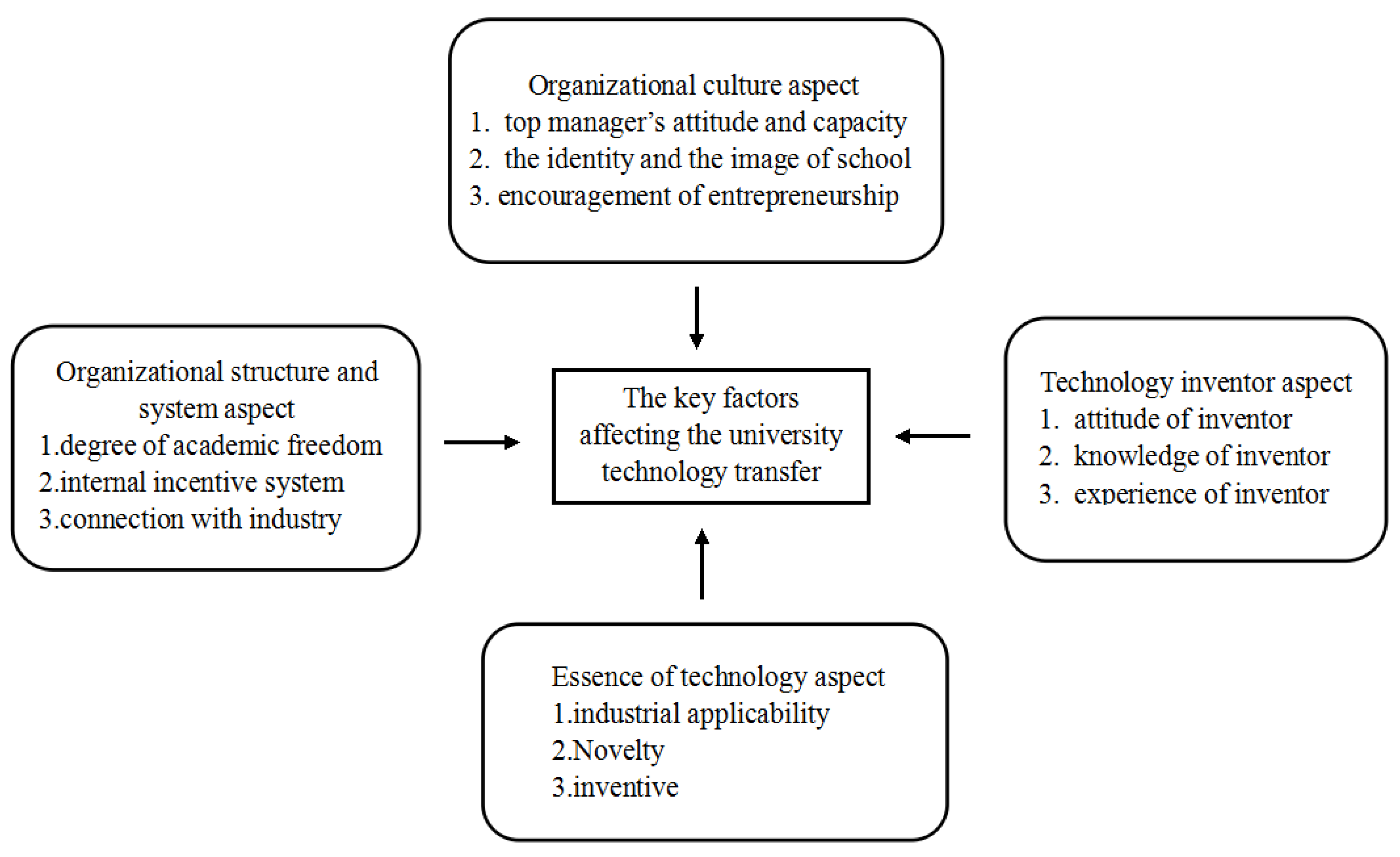
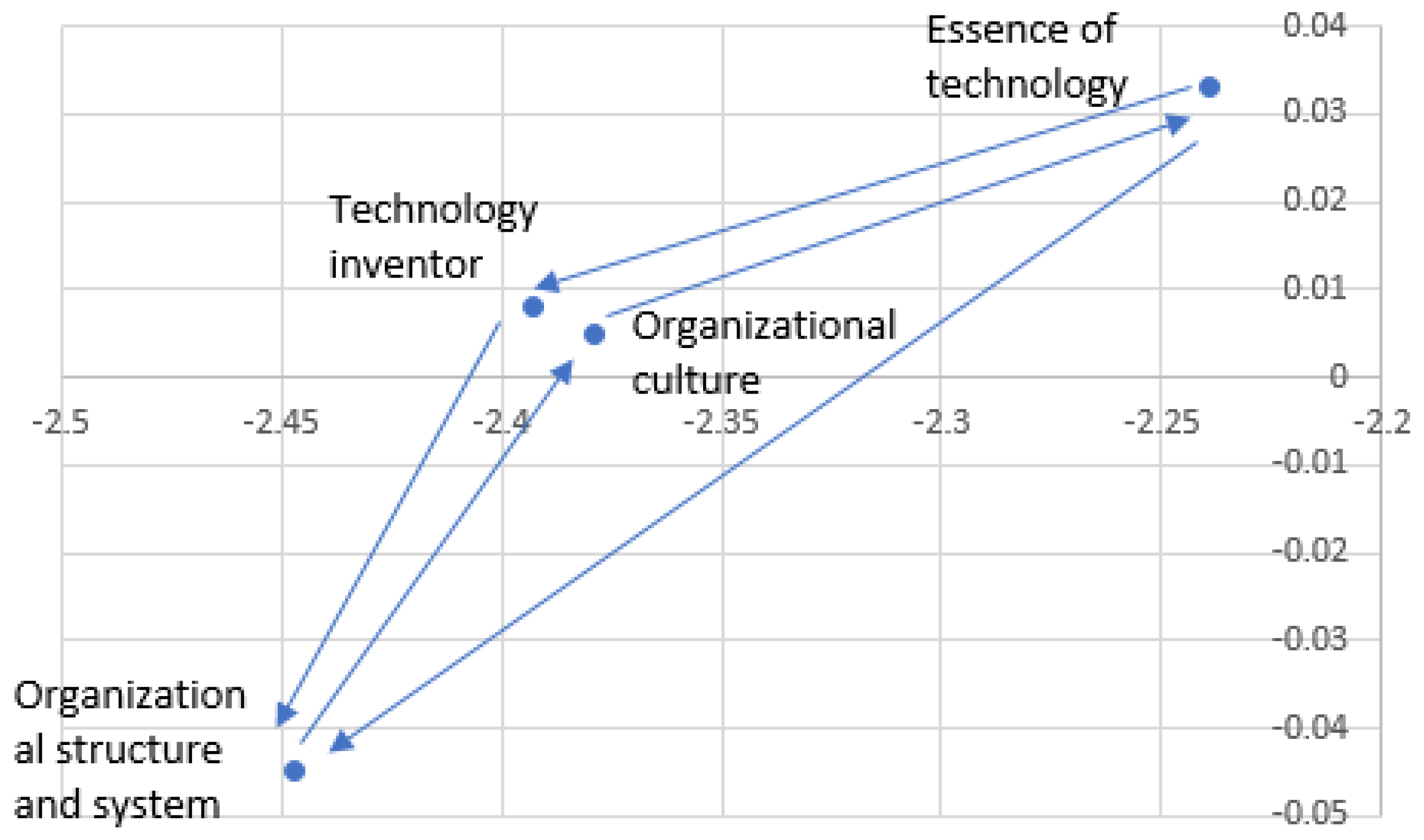

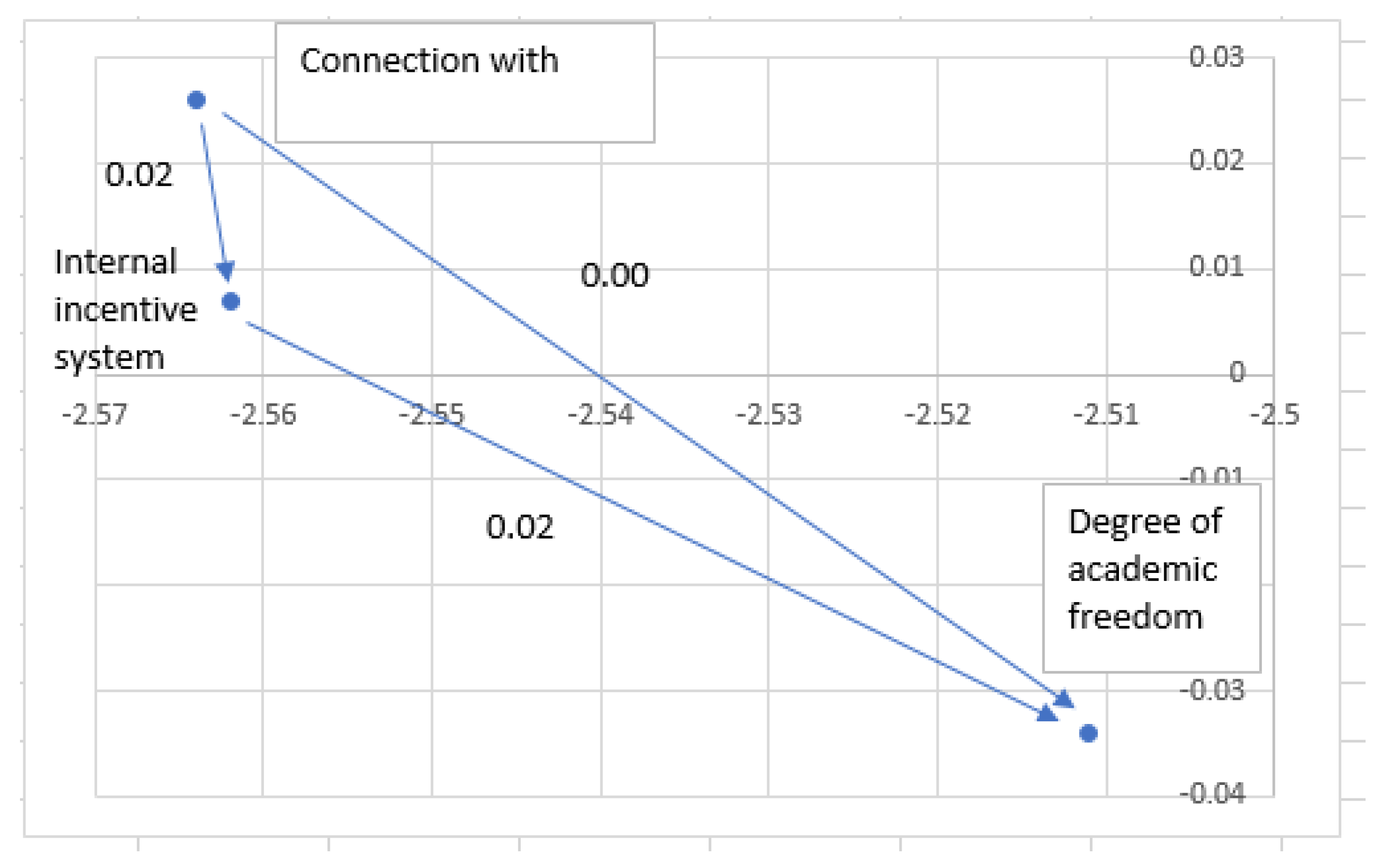
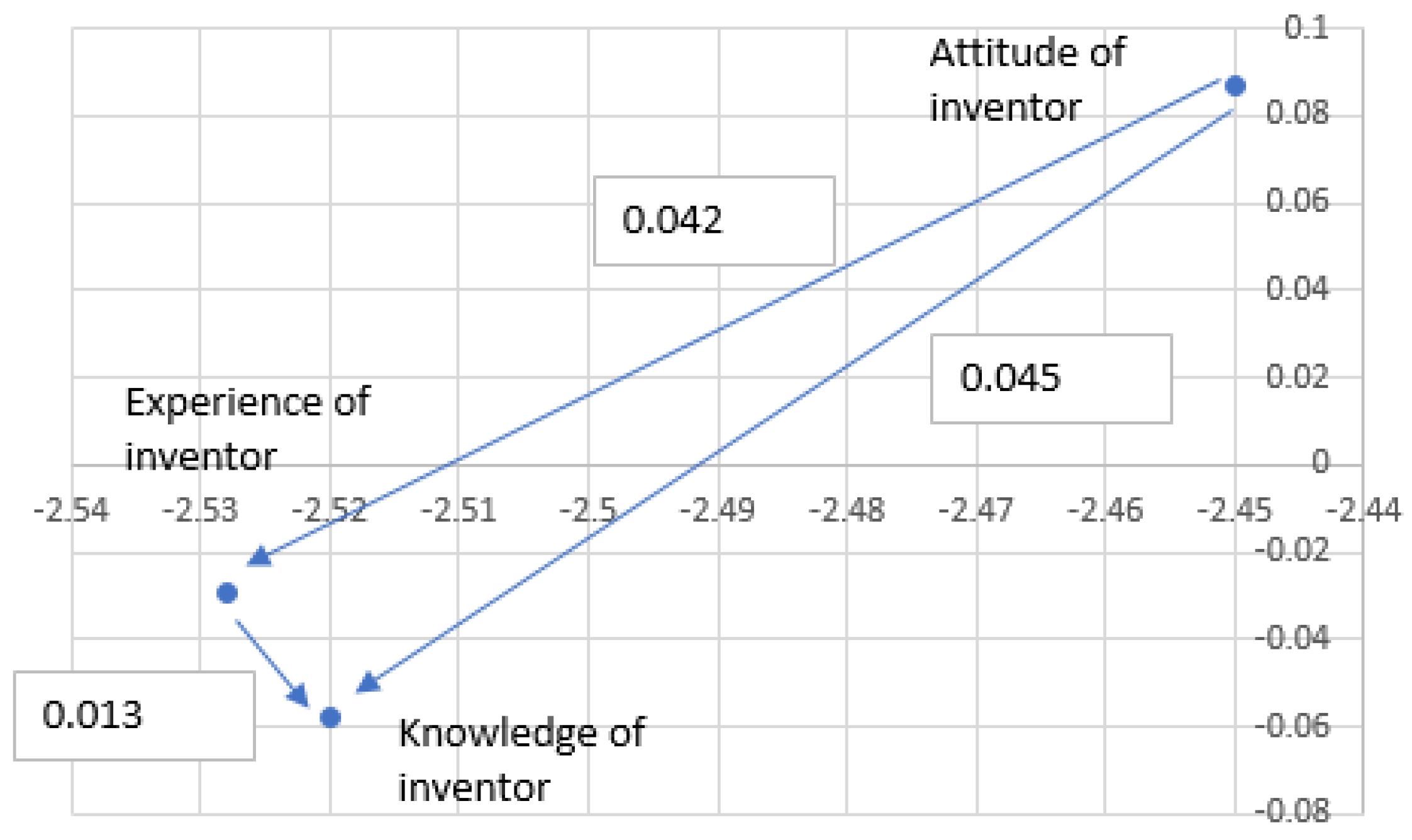
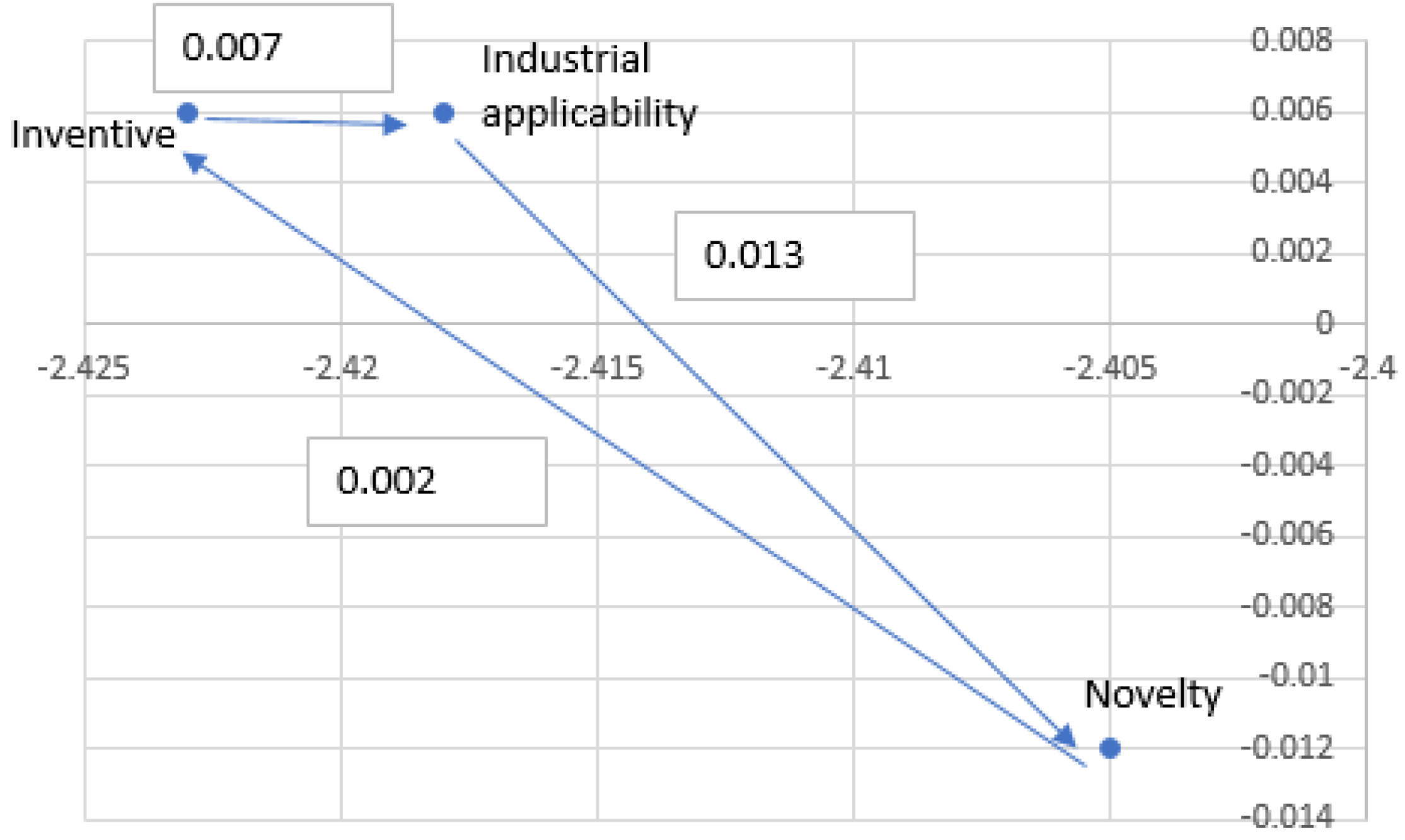
| Field | Education Level | Department | Title | Experience (Years) |
|---|---|---|---|---|
| Academic circles | Ph.D. | Business Administration, Secretariat | Professor | Teaching: 14 Administration:7 |
| Ph.D. | Business Administration | Professor | 13 | |
| Ph.D. | Business School | Associate Professor | 7 | |
| Ph.D. | Financial Management | Associate Professor | 6 | |
| Ph.D. | Business Management | Associate Professor | 6 | |
| Ph.D. | Business Management | Associate Professor | 6 | |
| Ph.D. | Quality Control | Research Assistant | 5 | |
| Ph.D. | Information Management | Assistant Professor | 4 | |
| Ph.D. | Information Management | Assistant Professor | 2 | |
| Industry circles | Ph.D. | Project Office | Assistant Vice President | 19 |
| M.A. | General Manager Office | General Manager | 18 years | |
| Ph.D. | Customer Service | Project Manager | 15 | |
| M.A. | Marketing | Manager | 14 | |
| M.A. | Field Application Engineering | Technical Section Manager | 10 | |
| M.A. | Notebook Supply Chain | Product Planning Manager | HP: 7 Technology Industry: 13 | |
| M.A. | Marketing & Sales | Project Manager | 10 | |
| Research Institute | Ph.D. | Cross Research Group | Director | 20 |
| M.A. | Industry Economics Center | Manager | 12 |
| Organizational Culture | Organizational Structure and System | Technology Inventor | Essence of Technology | Total | |
|---|---|---|---|---|---|
| organizational culture | −0.746 | −0.050 | −0.171 | −0.220 | −1.187 |
| organizational structure and system | −0.025 | −0.826 | −0.184 | −0.212 | −1.246 |
| technology inventor | −0.195 | −0.151 | −0.817 | −0.030 | −1.193 |
| essence of technology | −0.226 | −0.175 | −0.028 | −0.674 | −1.103 |
| total | −1.192 | −1.201 | −1.200 | −1.136 | |
| −2.379 | −2.447 | −2.393 | −2.239 | ||
| 0.005 | −0.045 | 0.008 | 0.033 |
| Top Manager’s Attitude and Capacity | The Identity and the Image of School | Encouragement of Entrepreneurship | Total | |
|---|---|---|---|---|
| top manager’s attitude and capacity | −0.899 | −0.165 | −0.172 | −1.237 |
| the identity and the image of school | −0.176 | −0.913 | −0.169 | −1.259 |
| encouragement of entrepreneurship | −0.198 | −0.191 | −0.863 | −1.252 |
| total | −1.274 | −1.269 | −1.205 | |
| −2.510 | −2.527 | −2.457 | ||
| 0.037 | 0.010 | −0.047 |
| Degree of Academic Freedom | Internal Incentive System | Connection with Industry | Total | |
|---|---|---|---|---|
| degree of academic freedom | −0.867 | −0.208 | −0.197 | −1.273 |
| internal incentive system | −0.181 | −0.901 | −0.195 | −1.277 |
| connection with industry | −0.190 | −0.175 | −0.903 | −1.269 |
| total | −1.239 | −1.285 | −1.295 | |
| −2.511 | −2.562 | −2.564 | ||
| −0.034 | 0.007 | 0.026 |
| Attitude of Inventor | Knowledge of Inventor | Experience of Inventor | Total | |
|---|---|---|---|---|
| attitude of inventor | −0.857 | −0.163 | −0.162 | −1.182 |
| knowledge of inventor | −0.208 | −0.905 | −0.176 | −1.289 |
| experience of inventor | −0.204 | −0.163 | −0.912 | −1.278 |
| total | −1.269 | −1.231 | −1.250 | |
| −2.450 | −2.520 | −2.528 | ||
| 0.087 | −0.058 | −0.029 |
| Industrial Applicability | Inventiveness | Novelty | Total | |
|---|---|---|---|---|
| industrial applicability | −0.900 | −0.156 | −0.150 | −1.206 |
| inventiveness | −0.149 | −0.904 | −0.156 | −1.209 |
| novelty | −0.163 | −0.154 | −0.891 | −1.209 |
| total | −1.212 | −1.214 | −1.197 | |
| −2.418 | −2.423 | −2.405 | ||
| 0.006 | 0.006 | −0.012 |
Publisher’s Note: MDPI stays neutral with regard to jurisdictional claims in published maps and institutional affiliations. |
© 2021 by the author. Licensee MDPI, Basel, Switzerland. This article is an open access article distributed under the terms and conditions of the Creative Commons Attribution (CC BY) license (https://creativecommons.org/licenses/by/4.0/).
Share and Cite
Sun, C.-C. Evaluating the Intertwined Relationships of the Drivers for University Technology Transfer. Appl. Sci. 2021, 11, 9668. https://doi.org/10.3390/app11209668
Sun C-C. Evaluating the Intertwined Relationships of the Drivers for University Technology Transfer. Applied Sciences. 2021; 11(20):9668. https://doi.org/10.3390/app11209668
Chicago/Turabian StyleSun, Chia-Chi. 2021. "Evaluating the Intertwined Relationships of the Drivers for University Technology Transfer" Applied Sciences 11, no. 20: 9668. https://doi.org/10.3390/app11209668






